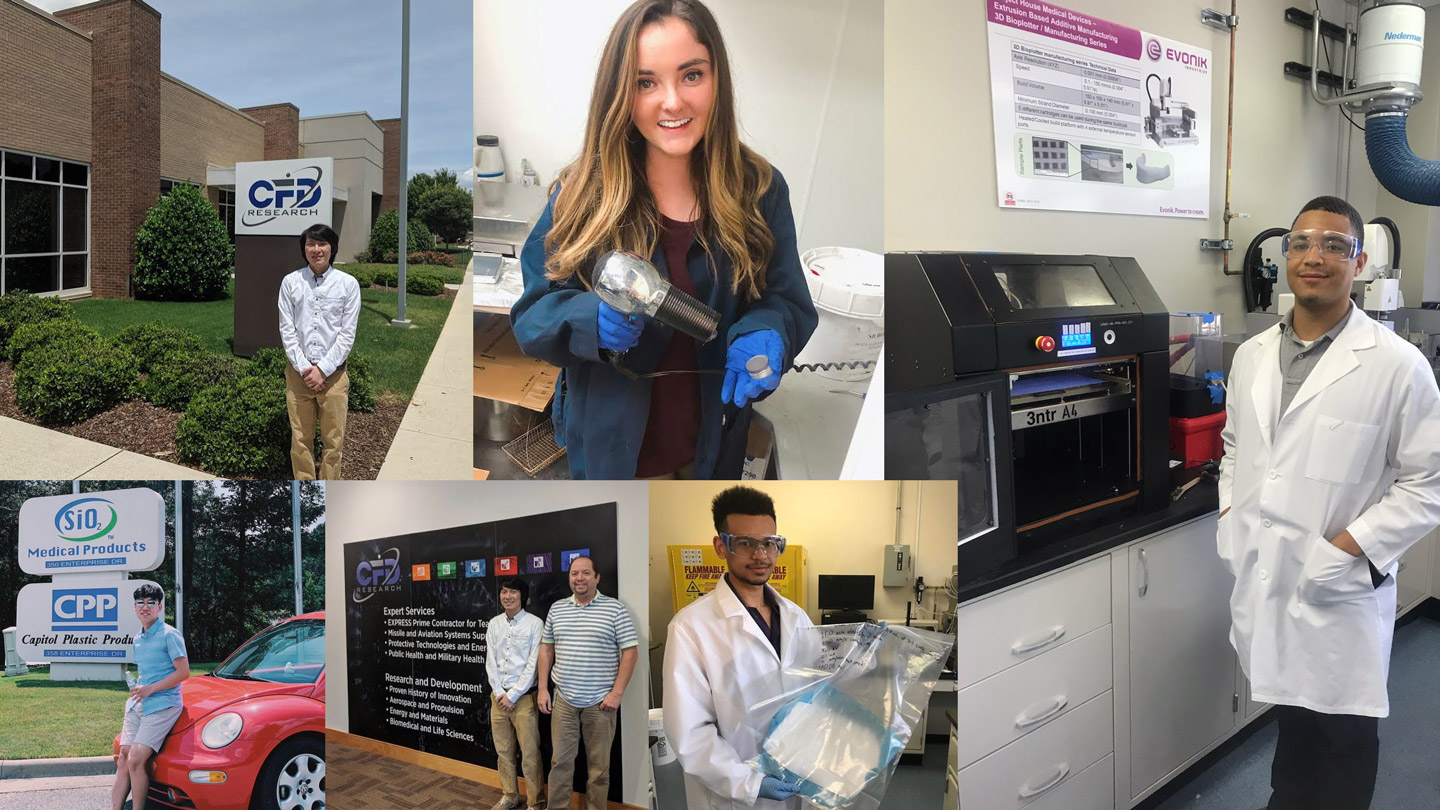
CIPPTA connects undergraduate and graduate students in STEM fields from nine Alabama partner universities with Alabama-based industries.
UAH
A Low Temperature Plasma (LTP) internship program led by The University of Alabama in Huntsville (UAH) that connects undergraduate and graduate students in STEM fields from nine Alabama partner universities with Alabama-based industries is preparing for its third round of internships in January.
The Corporate Internship Program on Plasma Technology Applications (CIPPTA) is one of four different summer internship programs under a $20 million, five-year grant by the National Science Foundation (NSF) Established Program to Stimulate Competitive Research (EPSCoR) known as Connecting the Plasma Universe to Plasma Technology in Alabama: The Science and Technology of Low-Temperature Plasma (CPU2AL).
The CPU2AL principal investigator is UAH’s Dr. Gary Zank, director of the Center for Space Plasma and Aeronomic Research (CSPAR), the Aerojet Rocketdyne chair of the university’s Department of Space Science and a member of the National Academy of Sciences.
"We set out to build a unique internship program that ties academia, particularly plasma physics in an academic setting, and bright students directly with industry," Dr. Zank says.
"This turned out far better than we anticipated, with excellent students interning with plasma-related companies that were largely unaware of the work being done in the plasma field by Alabama’s universities," he says. "As a result, we’re building the national and international reputation of the State of Alabama as a premier region of both plasma-related research and plasma-related applications and industry."
The program is growing annually and is always searching for new industrial partners, Dr. Zank says.
"The ultimate goal of the CPU2AL internship program is to engage a diverse, educated and skilled pool of scientists and engineers to promote long-term relationships between students, academia and industry to enhance the Alabama workforce," says Patrick Hambloch, CPU2AL project manager.
CPU2AL is an integrated, statewide collaborative effort that seeks to understand, predict and control the transfer of power from electromagnetic fields to electrons, ions, atoms, molecules and surfaces, and chemical reactions in plasma and on surfaces in LTP environments.
UAH leads a consortium of nine Alabama universities including Auburn University (AU), the University of Alabama in Birmingham (UAB), Tuskegee University (TU), the University of Alabama (UA), Alabama A&M University (AAMU), the University of South Alabama (USA), Alabama State University (ASU), and Oakwood University, together with an industrial partner, Computational Fluid Dynamics Research Corporation (CFDRC). As the lead institution, UAH interfaces directly with the NSF and all other institutions receive funding through subcontracts with UAH.
For CIPPTA, CPU2AL sponsors a 10-week internship for students pursuing degrees in science, technology, engineering and mathematics (STEM). Applications for the next round of internship opportunities will open Jan. 6.
"The program provides students at the nine partner CPU2AL with quality experiences on plasma technology applications at private companies and allows students the opportunity to establish connections with industry and university professionals," Hambloch says. "It is open to undergraduate and graduate students in a broad spectrum of disciplines."
Applicants must be fully enrolled at a partner institution as graduate students or as a sophomore, junior, or senior and must plan to be enrolled at a CPU2AL partner institution during the term after the internship. Students graduating before the internship are not eligible to apply unless they have an established research relationship with a CPU2AL investigator prior to the internship appointment.
Applicants must have a cumulative GPA of 3.0 or higher and be 19 years old by the start date of the appointment.
"The intention is to develop both the student workforce and the industry in the field of Low Temperature Plasma," Hambloch says. "The companies can define their own projects related to Low Temperature Plasma in a wider sense, and then students can apply for the positions."
CPU2AL has established partnerships with Alabama companies, is reaching out to companies that are past partners and seeks new partners that the researchers of the partner institutions have worked with. Any company that has ties to LTP can contact CPU2AL for project proposals, Hambloch says.
"Generally speaking, the field of Low Temperature Plasma applications in Alabama is still rather small, that is why we are working on workforce development in the first place, to enhance the industry and research environment at the same time," he says. "We hope to expand our reach over the next few years and identify more companies that we can work with for future internship placements."
For 10 weeks, industry partners get a student intern who has been selected in a competitive process and is among the top students who applied for the internship program.
"Last year, about 200 students applied across all internship programs," Hambloch says.
Companies can get insight from the student and what the student has learned academically, and they can use the opportunity to recruit, Hambloch says. The student works on the proposed project and writes a report about the work and experience.
Students gain hands-on experience in an industry placement for 10 weeks over the summer, which Hambloch says can help their career in several ways.
"The internship will help grow their professional network while also learning a different facet of Low Temperature Plasma applications, which may influence the choices of their career paths," he says. "Also, the internships are paid, so the students will receive a stipend along with a housing and travel allowance."
In the matchmaking process, a mentor at the partner company goes through the eligible applications and ranks them based on the student’s academic career, references and a motivation statement.
"We will then offer the internship to the top ranked candidate," Hambloch says. "So, it is a competitive process and it is indeed up to the company, rather than our project, to pick the student they want to work with."